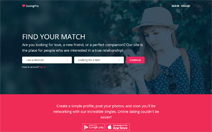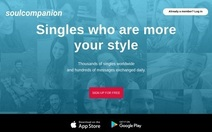How to build a profitable dating platform: Find your first 10 customers and perfect product-market fit
Three articles from Lenny’s Newsletter about B2B (Business-to-Business) approach with educational cases. Online dating is, of course, B2C (Business-to-Consumer) with the differences described below. Everything in the articles, once adapted, can be confidently applied to your B2C dating niches.
In the context of acquiring the first 10 clients, B2B and B2C business models have several key differences:
- Target Audience and Sales Approaches:
- In B2B: The target audience usually consists of other companies and organizations. Sales often require a personalized approach, personal meetings, and lengthy negotiations.
- In B2C: The target audience is end consumers. Sales are often based on mass marketing, advertising, and online presence.
- Decision-Making Process:
- In B2B: Purchasing decisions are usually made collectively, involving several people from different departments of the company, and can take significant time.
- In B2C: Purchasing decisions are usually made by an individual (end consumer) and are often quick.
- Size and Cost of Deals:
- In B2B: Deals are typically larger and more expensive, with a higher level of complexity.
- In B2C: Deals are usually smaller in size and cost, with less complexity.
- Customer Relationships:
- In B2B: Relationships with customers are built on a long-term basis, focusing on personalized service and support.
- In B2C: Customer relationships are often more short-term and based on meeting immediate needs.
- Marketing and Advertising:
- In B2B: Marketing often focuses on building professional relationships, participating in industry events, and personalized offers.
- In B2C: Marketing targets a broad audience using social media, online advertising, and mass communications.
In both cases, attracting the first 10 clients requires a clear understanding of the target audience’s needs and preferences, as well as an effective sales and marketing strategy. However, the specifics of these strategies will significantly differ depending on the business model.
- How to validate your B2B startup idea
- How to identify your ideal customer profile (ICP)
- How to find and win your first 10 B2B customers
How to identify the most profitable segment quickly and cost-effectively
Rapid and cost-effective identification of profitable segments is possible through short customer interviews using Jobs To Be Done (JTBD) methodology, analysis of current customers and their tasks, plus express validation of hypotheses through test sales or surveys. The key is focusing on real customer jobs and their willingness to pay, not just demographics or personas.
Step-by-step guide
1. Gather hypotheses about segments and jobs
Compile a list of presumed segments and jobs they solve with your product:
- Dating software providers: 7,000+ dating platforms globally
- Operators and support staff
- Around dating platform startups: beginners seeking dating site software
- Segments:
- 80% beginners looking for white label dating solutions
- 20% experienced: Affiliates working with dating app development
- Time to market with 95% savings using ready-made dating app solutions
- With design themes for dating websites
- Operator launch without user database
- Immediate payment processing setup
- Pre-filled dating profiles
- Fast time to market
- Built-in analytics
- Multiple traffic channels
- Segments:
Use analytics to identify who already buys dating software, who brings more profit, and who returns for additional dating app features.
2. Short interviews (Qualitative research)
Conduct 10-20 short interviews with representatives of different segments or survey current dating platform owners. Learn what jobs they hire your dating software to do, what alternatives they consider (custom dating app development vs. dating script solutions), and why they choose your dating site software over competitors.
3. Assess profitability and segment potential
For each identified segment in the dating software market, estimate:
- Segment size (potential dating site owners in the market)
- Average order value for dating platform packages
- Purchase frequency of additional dating app features
- Cost of serving different types of dating business clients
Quickly assess demand through keyword research for terms like “dating software,” “white label dating app,” and “dating site script.”
4. Rank segments by criteria
Create a comparison table: segment — size — margin — frequency — competition — customer acquisition cost — growth potential. Choose the segment with the best combination of high profitability, sufficient size, low competition, and easy access to dating entrepreneurs.
5. Test the hypothesis in practice
Launch test campaigns targeting specific dating software segments or create special offers for dating app builders. Quickly check response rates and economics: if unit economics work for your dating platform solution, scale up the successful approach.
Simple checklist for quick segment selection
| Step | Questions/Actions |
|---|---|
| 1. Customer Analysis | Which dating platform owners bring the most revenue? Who returns for more dating software features? |
| 2. Interviews | What dating business challenges do customers solve? Why choose your dating script over competitors? |
| 3. Segment Assessment | How many potential dating site owners? What’s the average spend on dating app development? |
| 4. Segment Comparison | Where is competition lowest in dating software? Where are dating entrepreneurs easiest to reach? |
| 5. Quick Test | Launch targeted ads for dating platform solutions and measure conversion rates |
Tips for accelerating the process
- Use existing data from your dating software analytics and CRM
- Don’t waste time on complex surveys — 10-20 short interviews with dating platform owners will provide 80% of insights
- Immediately test segment economics in practice with real dating software customers
- Focus on one dating business segment and test hypotheses sequentially rather than trying to serve all dating app markets
Practical examples
Dating software company: After interviewing 30 dating platform owners, discovered that established dating business operators are willing to pay 3x more for premium dating app features than newcomers without revenue. Focusing on experienced dating site owners increased sales by 60% in 3 months.
Online dating solution provider: Analysis of lifetime value and return patterns revealed that 20% of dating platform clients generate 80% of profit through additional dating software purchases and customizations.
Conclusion
You can quickly and cost-effectively identify the best profitable segment in the dating software market through:
- Analysis of your dating platform customer data
- Short interviews about dating business needs
- Quick assessment of dating software segment economics
- Testing hypotheses with real dating app entrepreneurs
The key is working with real data from dating site owners, testing quickly with different dating software segments, and scaling what works in the dating platform market.




